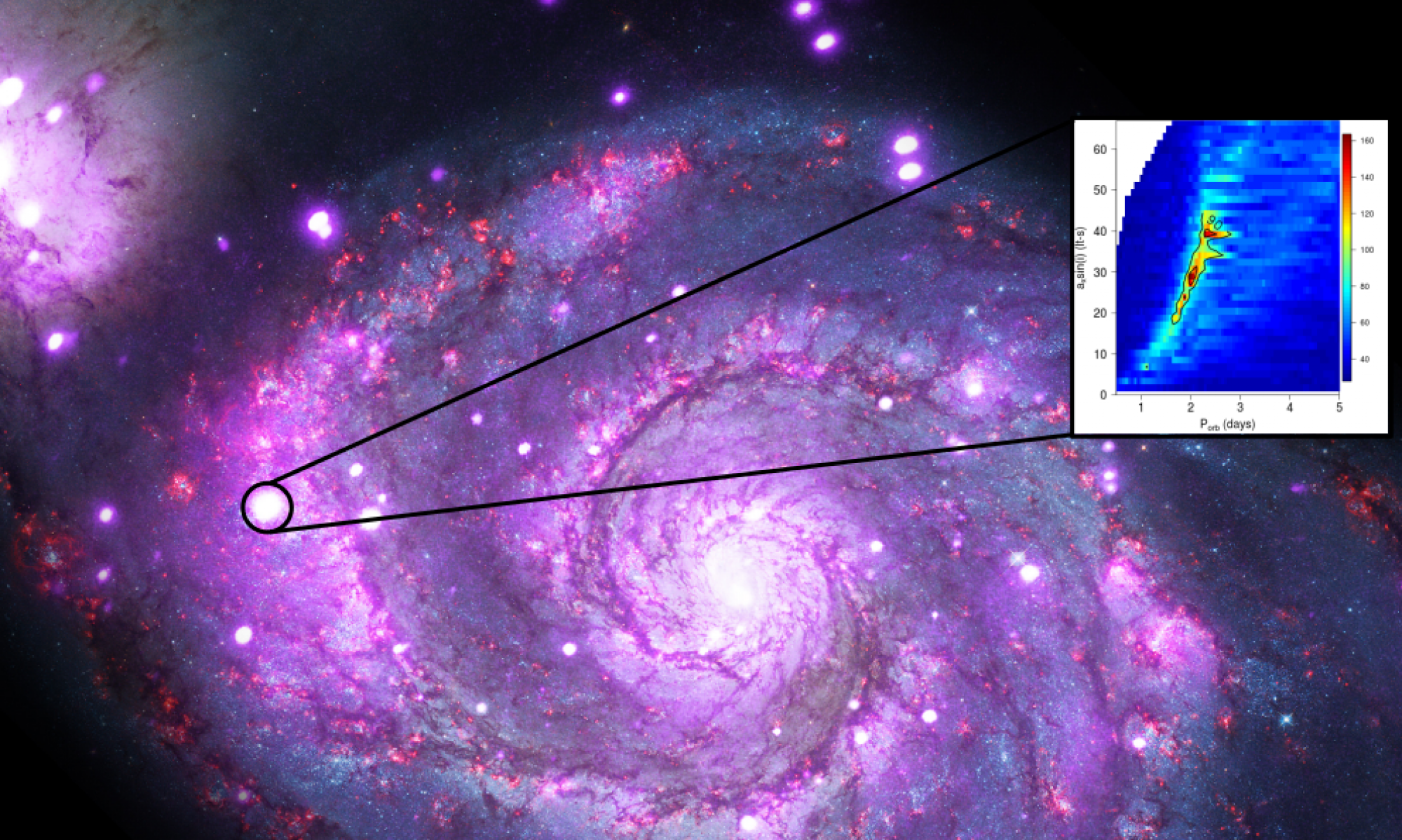Pulsating Ultra-Luminous X-ray sources search and study

Ultraluminous X-ray sources (ULXs) are extragalactic, off-nuclear, point-like sources characterized by luminosities well in excess of the Eddington limit for a stellar-mass black hole (BH) of 10 solar masses. For this reason, since their discovery in the '80s and until 2014, they were considered a well-suited population to look for intermediate-mass black holes (IMBHs). If this was the case, indeed, their extreme luminosities would be simply explained by sub-Eddington accretion rates.
However, the ULX paradigm changed in 2014 when Bachetti et al. [1] found a coherent pulsation with a period of ~1.4 s in the signal coming from M82 X-2, clearly indicating that this ULX hosts a neutron star (NS). This was the first pulsating ULX (PULX), a class that now is comprised of 7 sources, 3 of which were discovered by our group (NGC 5907 ULX-1 [2], NGC 7793 P13 [3], M51 ULX-7 [4]). PULXs can exceed the Eddington limit for accretion-powered sources by a factor of 500 or even more, challenging what we know about accretion physics and posing a series of questions: how can they reach such high luminosities? Is it really a super-Eddington emission or is it just the effect of an extreme beaming factor? In the case of super-Eddington emission, how can these NSs sustain such an extreme accretion rate? And last but not least, is ULXs as a class a heterogeneous population composed of BHs and NSs, or is there a dominant new ultraluminous NSs population with extreme properties?
In order to answer to the above questions we developed new ad hoc timing analysis tools aimed at taking into account for the extreme physical properties of these pulsars such as large first period derivatives of the spin period and the motion along the binary orbit. Both effects play an important role in washing out the signal making the discovery of a PULX a hard task.
We have learned a lot since 2014 but more is yet to be done. Stay tuned to find out the latest news!
If you are interested in a thesis regarding PULXs here you can find available theses about this topic.
Involved group members: Gianluca Israel, Matteo Imbrogno, Luigi Stella, Alessandro Papitto
References
[1] Bachetti, M., Harrison, F., Walton, D., et al. 2014, Nature, 514, 202 "An ultraluminous X-ray source powered by an accreting neutron star"
[2] Israel, G. L., Belfiore, A., Stella, L., et al. 2017a, Sci, 355, 817 "An accreting pulsar with extreme properties drives an ultraluminous x-ray source in NGC 5907"
[3] Israel, G. L., Papitto, A., Esposito, P., et al. 2017b, MNRAS, 466, L48 "Discovery of a 0.42-s pulsar in the ultraluminous X-ray source NGC 7793 P13"
[4] Rodríguez Castillo, G. A., Israel, G. L., Belfiore, A., et al. 2020, ApJ, 895, 60 "Discovery of a 2.8 s Pulsar in a 2 Day Orbit High-mass X-Ray Binary Powering the Ultraluminous X-Ray Source ULX-7 in M51"